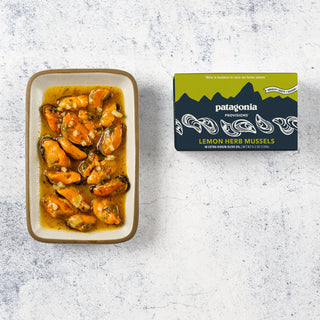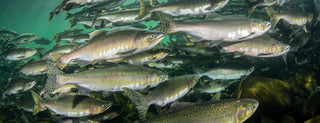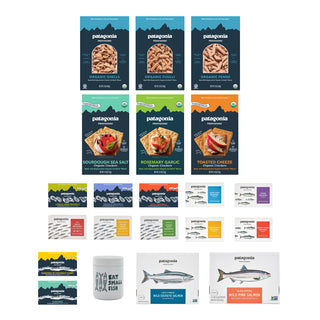Twenty-two years ago I abandoned civilization to follow whales. Aboard an old wooden boat, I followed a matriarch orca, Scimitar, as she led her family deep into the mainland inlets of British Columbia, Canada. She found dinner and I found my home: Echo Bay.
Echo Bay has no roads, power, ferries or supermarkets. We do have a one-room school, a seaplane bringing mail once a week and a wonderful community of about 50 people. As a biologist, I studied whales, but as a mother, I wanted my community to thrive. So, when the first salmon farm arrived, gliding along behind a tugboat, I thought, “good idea.” This industry will bring prosperity to my neighbors and conservation to the wild salmon. I was wrong.
Salmon farms hatch smolts (young salmon) in freshwater hatcheries, then transport them to seawater net pens, where they fatten them rapidly and harvest them 18 months later. Fish farming is an ancient and often successful idea. However, in this case, the fish − salmon, are probably the only carnivore ever industrially farmed. This simple perversion triggers a cascade of calamities that threatens to unravel the marine ecosystems of western Canada, and everywhere else salmon feedlots occur.
To feed the farmed salmon, the ocean’s last reserves of highly edible small schooling fish (such as blue whiting) are harvested, rendered into oil, extruded, packaged, shipped and then thrown back into the water. With enormous fuel expenditure, one ecosystem is starved of essential fish in its food chain while the water where all this feed is thrown is overburdened with waste and feces − to the point of causing toxic algae blooms. These red blooms are a flashing light warning, “overload, overload.” In addition, salmon pathogens have not enjoyed such increased opportunity since the glaciers receded. Unlike terrestrial farms where biosecurity can be attempted, this is not possible in the open ocean net pens. Fish pens exclude essential predators that remove the sick and infectious, but they allow free flow of viruses, bacteria and parasites − the little guys, as I call them. Swift currents suck these into the pens, where they thrive in the over-crowded soup of fish and fish waste and then the same currents spew pathogen loads increased over a thousand-fold to challenge wild fish at levels the fish were simply not built to withstand.
Seals, as smart as our best dogs, learn to grab the farm salmon and suck their soft flesh through the mesh. The farmers shoot these seals; in the early 1990s, they also tried broadcasting sounds designed to hurt them. This experiment caused an entire population of the exquisitely sensitive orca to vanish, stranding me, as a whale researcher, without whales.
Every biologist who goes into the wilderness today is, or will be, in my shoes. We all ask ourselves: What do you do when the Corporation comes to town? The Corporation’s goal is the rapid extraction of energy. It’s like shorting a battery, selling the magnificent spark and leaving behind a dead, useless battery. It goes from ecosystem to ecosystem, sucks out the spark and then moves on, leaving behind a deflated, dismantled, dysfunctional once-living system. In this case, it is using the power of the oceans as a sewer to raise a nomadic fish in a pen. Wild salmon fuel the spark.
This exercise displays the Corporation’s undisputed ownership of a resource (salmon) that was once held in common, and more importantly, it unleashes development in wild salmon habitat from the energy-rich rivers to coastal oil reserve. Collapse of the wild salmon is a cost the Corporation does not pay. Its profit margin from farming salmon is so thin, the Corporation says it cannot afford the closed-containment tanks that would stem the flow of pathogens, protecting the wild fish. The wild fish are also competitors for its market, and the Corporation simply is not known to assist the competition.
After an unproductive 10 years begging government to control the feedlots, I decided to measure and publish on the impact of this industry. I did this for free so no one would own my voice. I wrote about Atlantic farm salmon invading the age-old alliance between Pacific salmon and their rivers; the eviction of the resident orca population (a clear violation of the Canadian Fisheries Act); eyeball parasites infecting flat fish near the feedlots; and the proliferation of sea lice now eating young wild salmon to death.
Nature separates mature salmon from baby salmon. When salmon spawn they, and their sea lice, die in the rivers. In the spring the cycle starts fresh and lice-free. But in a classic example of disease amplification, inbound migrating wild salmon now pass sea lice to the farm salmon. These lice thrive in the host-crowded pens.
Each spring, I document young pink salmon dying of lice. These salmon are the bloodstream of the eastern Pacific. They live only two years and feed low on the food chain, making them one of the cleanest proteins left on earth. Their sheer numbers move tons of essential ocean nutrients into the mountains to feed the other salmon, bears, eagles, wolves and humans. I now see this fish as sacred. On Mother’s Day, we, the people of this area – from First Nations to tourism operators to local residents – all touch the water, ocean, river, sink faucet: The water is continuous and we wish this fish safe passage.
As I write, I am trying to both bring sea lice into court under the Canadian Fisheries Act and to help people understand what pink salmon really are, the essential spark that drives this ecosystem. I write to you because clearly no government is going to save the essential workings of our planet. If you want something to change, stop feeding the Corporation. Stop paying for farmed salmon. Visit Safe Salmon to engage in the protection of wild salmon. Ask your grocer for wild (the healthiest) pink salmon. The power of one is all we have, but we all have it.
Alexandra Morton is the author of various books on whales, life on the Pacific Coast and the impacts of salmon farming. Her scientific research can be viewed here alexandramorton.ca













